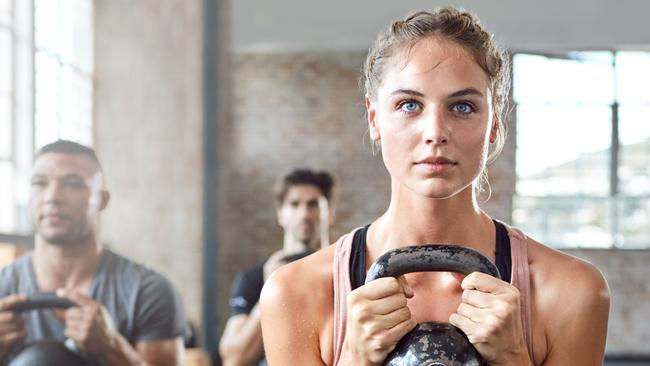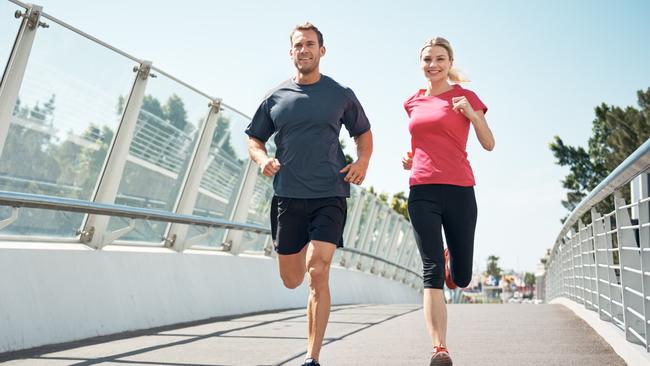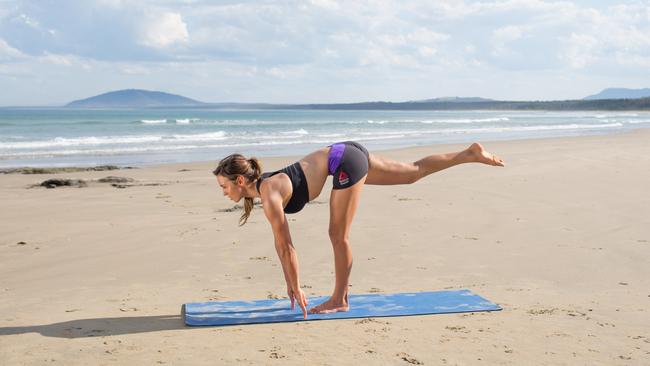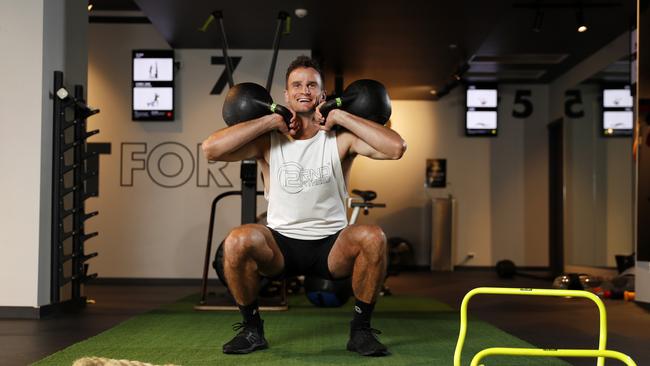Fitter or fatter: the science of getting into shape
Good news for sedentary midlifers! A new study has highlighted how quickly you can shed weight.

Motivating yourself to exercise is the toughest part of the challenge, but results of a new study may just provide a dose of inspiration for those struggling to get off the sofa. In an intriguing “life swap” trial at the University of Aberdeen, published in the journal Nature Communications, researchers persuaded 39 middle-aged men who train for running, triathlon and cycling events to ease off from their athletic regimen while getting 44 sedentary midlife male recruits with early-stage type 2 diabetes (they had mostly had it for less than a year) to take up exercise for the first time.
Predictably, perhaps, those who temporarily ceased exercise saw their health profile drop sharply. Yet within eight weeks of pedalling consistently on an indoor bike at a moderate pace for one hour a day, five days a week, the participants who started from scratch saw their metabolic health and fat-burning abilities transformed to a degree that surprised even the cardiologists carrying out the study.
“Despite being tracked to make sure no changes were made to their diets, the men in their forties and fifties who had been very inactive lost an average 2.6kg in weight in the two-month trial,” says Professor Dana Dawson, chair in cardiovascular medicine at the University of Aberdeen and lead author of the paper. “Their blood sugar and blood pressure control improved, cholesterol levels dropped, meaning the all-round metabolic health gains were significant.”
Meanwhile, the previously “super healthy” group experienced a dramatic “deconditioning” effect that hampered their muscles’ ability to use up saturated fat, an early but significant warning sign for metabolic issues.
People with obesity have higher amounts of fat in their muscle cells than the general population, which contributes to insulin resistance, raised blood cholesterol – two thirds of the sedentary group were on statins – and a higher risk of metabolic disease, including type 2 diabetes and conditions that affect the heart or blood vessels. But in a peculiar twist of biology dubbed the “athlete’s paradox”, trained athletes also accumulate fat in their muscles, although their intense exercise regimens mean they utilise it as a preferred source of energy, thereby avoiding damaging outcomes.
“It was the change in storage and use of this fat inside the muscles that was the focus of our study,” Dawson says. “At face value, very athletic people have similar amounts of fat in their muscles as the sedentary population yet they seem to be able to tap into it and use it as an immediate source of fuel, whereas in inactive people it remains redundant and stores up problems.”
While the super-fit group put their feet up for eight weeks – they got to select a two-month period at any time during the three-year study – the previously inactive took to an exercise bike in Dawson’s labs every Monday to Friday for two months. A raft of measurements including heart rate, blood pressure, VO2 max (the maximum rate of oxygen the body is able to use during exercise), weight and BMI were taken before they set about cycling for 60 minutes daily, initially at a moderate intensity of up to 60-65 per cent of their VO2 max.
Improvements came quickly, Dawson says. “When they started, they were visibly struggling, breathing and sweating profusely with towels around their necks to mop up the perspiration. But eight to ten days into the study, some of them asked for the resistance on the bikes to be increased, and within a month we found that many had voluntarily increased their workout intensity to 80-85 per cent of their VO2 max, suggesting a sharp hike in fitness levels.”

To measure how fat utilisation changed for each of the groups, Dawson and her colleagues analysed the turnover of unsaturated linoleic acid and saturated palmitic acid, two of the most abundant types of fat stored in muscle tissue. “We gave them all small amounts of these fatty acids through an intravenous injection and then conducted MRI scans to see how the fats behaved inside their muscle cells,” Dawson says. “Through biopsies before and after the infusions and exercise or inactivity interventions we were able to determine the rate at which their muscles used the fats that were added or present naturally.”
Results of the British Heart Foundation-funded investigation showed that when they were in peak training, the athletic group’s muscles were full of predominantly saturated fat, a finding that surprised even the researchers, but also that they burnt that fat up to 4.5 times faster than the patients with type 2 diabetes. However, being forced not to exercise for two months blunted the ability of their muscles to use the fat in the same way suggesting that, if they continued putting their feet up, it would be a slippery downward slope towards worsening metabolic health.
With the non-athletic group, their muscles were laden with mostly unsaturated fat until they started cycling, when the way their bodies stored and utilised saturated and unsaturated fat improved. “By the end of the eight weeks we saw that the muscle stores and usage of fat was similar in both the exercise newcomers and the deconditioned athletes,” Dawson says. “Adding more activity to their lives had quite quickly reversed many of the type 2 diabetes symptoms of the previously sedentary people.”
It is encouraging, Dawson says, that such dramatic improvements occurred within a matter of weeks, but her results also offer a cautionary reminder that consistency is what pays off. “It’s very motivating for people to realise that massive benefits can occur within eight weeks of becoming more active. But the message from our study is that staying fit is important for improving metabolism of fat.”
Want more fast results? Here’s how to get them:
Add intervals to burn body fat
It is now accepted that exercise alone is an ineffective and long-haul approach to fat loss, but that combining exercise with a healthy diet will accelerate your progress. Dr Dan Gordon, associate professor in cardiorespiratory exercise physiology at Anglia Ruskin University, says that, counterintuitively, low-intensity exercise such as light jogging or cycling in the “fat burning” zone is not the most effective way to blast body fat.
“While it is true that the energy to fuel the body in this low-intensity cardio is predominantly from fat, results won’t happen quickly because the intensity is so low,” Gordon says. “Increase the effort to an HIIT-type workout with 2-5-minute intervals at 75-80 per cent of effort and your body switches to burning carbs for fuel, but because you are working at a faster rate you will burn more fat overall.”
It is in recovery, he says, where the real magic happens. “After working at a higher intensity, your body uses energy to restore the carbohydrates you’ve used up, to lower your body temperature and to reduce lactate levels. So the fat burning goes on.”
There’s a similar after-effect with strength training. “You don’t burn much fat lifting weights, but similar principles apply during recovery,” Gordon says. “However, you’d need to devote more time to strength training than you would to doing intervals for the same fat-burning effect.” If he was to rank types of exercise according to their body-fat-burning potential, Gordon says he would place interval training top, weight training second and low-intensity cardio third. “However, for maximum health and fat-burning effects it would be best to do a bit of all three.”
Mix up your tempo to blast belly fat
Exercise beats fasting when it comes to blasting deep belly fat, the type that settles around the organs causing metabolic havoc, according to a review of 40 relevant studies involving more than 2,000 people published in the British Journal of Sports Medicine last year. However, researchers believe that a combination of diet and exercise is better than workouts alone.
Researchers have suggested that there is no single exercise type that outperforms others for blasting belly fat, and while HIIT can help, the consensus from scientists including those at the University of Otago and the University of New South Wales is that it is no better (or worse) than moderate intensity continuous exercise. In 2022 a study on young people showed that cardio (swimming, running, cycling) was a good choice, while others have shown that mixing up the tempo is beneficial: adding eight-second bursts of sprinting to a 20-minute run was shown in one study to help overweight men to shed 17 per cent of their deep belly fat over a three-month period.
Do the single-leg Romanian dead lift to firm glutes fast
If your bottom is starting to sag, a fast route to firming it is to focus on cardio exercise along with three specific strength exercises. Researchers reporting in the journal Medicine and Science in Sports and Exercise last year assessed a range of exercises for their ability to work the gluteal muscles, including the single-leg squat, banded side step and side-lying leg raise. When it came to recruiting the gluteus medius and the gluteus minimus muscles, however, the split squat and side plank were among the winning moves, with the single-leg Romanian dead lift the outstanding exercise for firm buttocks.

Stand with feet shoulder-width apart and knees slightly bent. Raise your right leg off the floor and, keeping your back nice and straight, hinge forward from the hips until your torso is almost parallel to the ground and your right leg is extended straight behind you. Reach down towards the floor with your right hand. Pause and squeeze the glutes before raising your torso back to the start position. Perform 6-8 reps before changing sides. Try 2-3 sets. As you get stronger try holding a weight in your right hand as your right leg raises behind you and then switch sides.
Sets of 12 reps of each exercise using the maximum weight you can lift for the duration were recommended by the authors of the paper. “Benefits of resistance training will start to come the minute you begin lifting weights,” says Dalton Wong, founder of Twenty Two Training. “But 3-4 sessions a week brings optimal results.”
Replace crunches with squats and add rotation
Squats are undervalued as a core-strengthening exercise, but as a recent study by Brazilian scientists shows, they are more effective than traditional abdominal crunches for strengthening the muscles around the core, including the internal obliques on the sides of the waist and the multifidus that support the spine – important for protecting against back injury. Other researchers have reported that adding rotation in the form of exercises such as side-plank rotations is key for strengthening the obliques more effectively than traditional core moves.

“Rotational exercises work the obliques and other supporting muscles such as the multifidus or deep intrinsic back muscles that are so important for good posture,” Wong says. “A strong core comes from a variety of strong movements with squats, dead lifts and push-ups also helpful.”
If more than a couple of core sessions a week is too much to bear, try picking up the pace of a run. When researchers from the Memorial University of Newfoundland placed electrodes on the multifidus, obliques and transverse abdominis core muscles of participants they found that a hard 30-minute run activated the muscles as much as when the same people did targeted core exercises.
Work out with others for the fastest weight loss
Whether it’s a group exercise class at the gym or power-walking with a friend, Dawson says the best weight-loss hack is to work out with other people. “The biggest limiting factor for fat and weight loss is finding that constant motivation,” she says. “And the best proven way to keep going is to exercise in a group or with others.”
Researchers have shown that we are not only motivated to keep going by other people but that we gravitate towards the fitness behaviour of those around us. In other words, according to psychologists reporting in the Journal of Social Sciences, the more effort others put in, the harder we work ourselves. The result is more weight lost more quickly. In one review of 47 published papers involving more than 10,000 participants that was carried out by researchers at the Universities of Oxford and Exeter, people in group diet and exercise programmes lose 3.5kg more than those going it alone after six months.
The Times




To join the conversation, please log in. Don't have an account? Register
Join the conversation, you are commenting as Logout